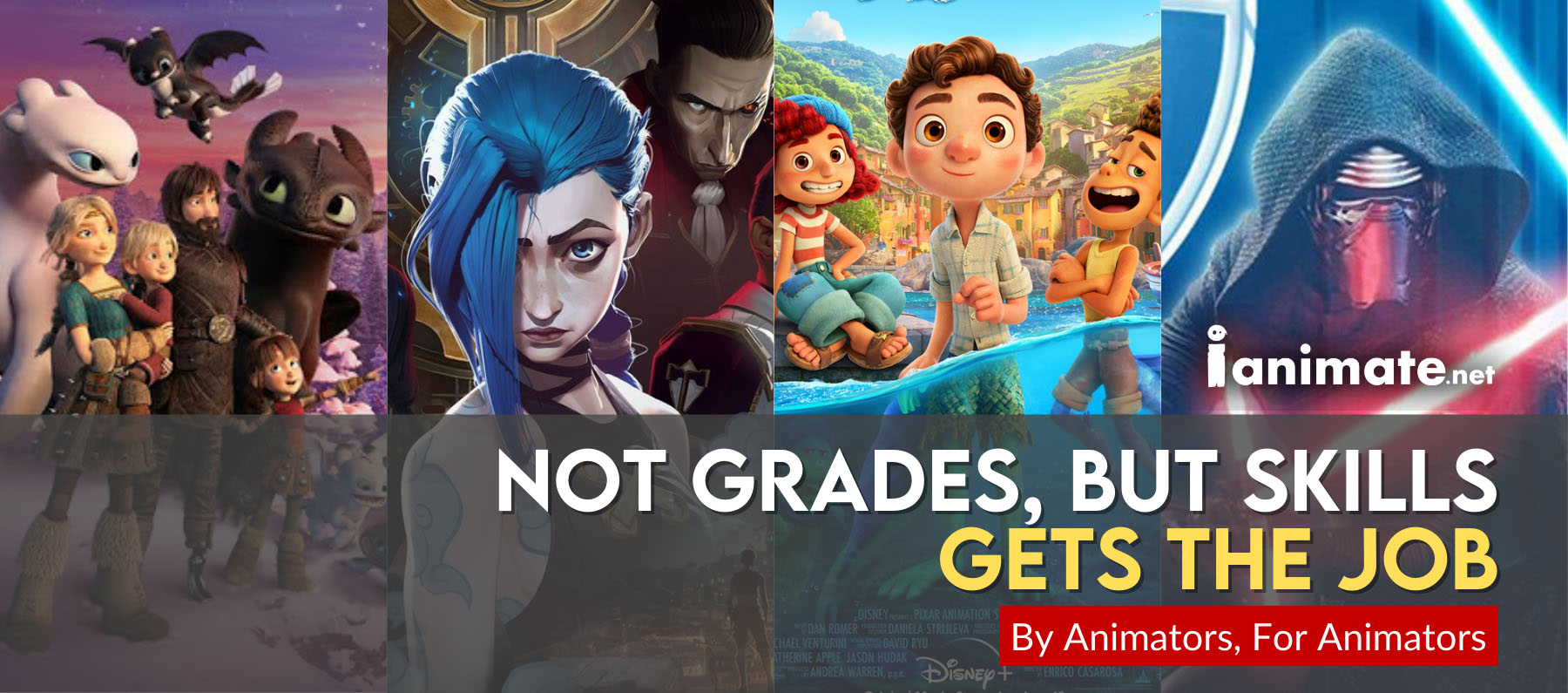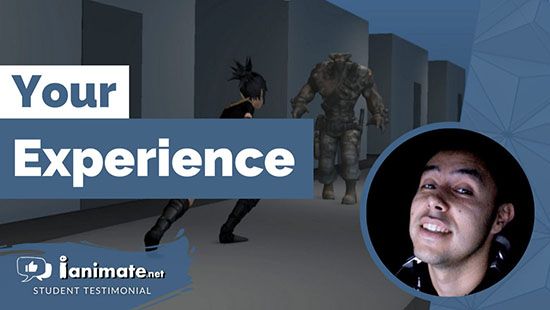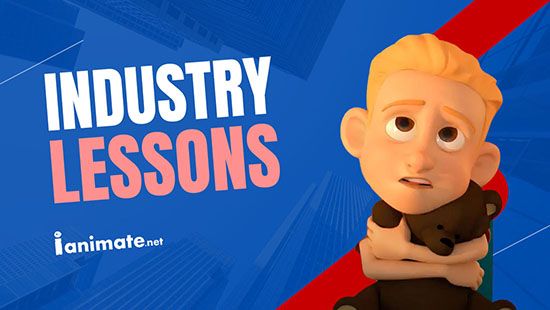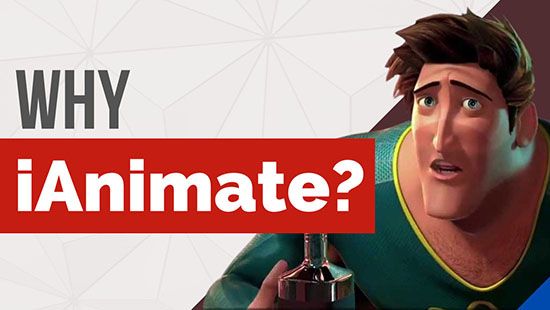Animation Exercises for Beginners: Master the Fundamentals
Article by Richard Arroyo & iAnimate
Animation exercises for beginners provide the essential foundation every aspiring animator needs to develop their craft. Just as athletes build strength through consistent training, new animators must repeatedly practice fundamental movements to internalize the principles that bring characters and objects to life. These carefully selected challenges—from bouncing balls to flour sack animations—teach you to observe, analyze, and recreate motion while building the muscle memory that transforms technical knowledge into artistic instinct.

Why Animation Exercises are Crucial for Beginners
The Power of Practice in Learning Animation
Ever wonder why some beginner animators progress faster than others? It's not just natural talent—it's consistent practice through animation exercises. Animation exercises for beginners aren't optional—they're the foundation that everything else builds upon. Just like learning an instrument, animation skills develop through repetition and muscle memory.
When you practice basic exercises repeatedly, the principles of movement become second nature. Your brain starts to understand timing, spacing, and weight without you having to consciously think about each element. The difference between watching tutorials and actually animating is like the difference between reading about swimming and jumping in the pool.
Learning by Doing: Lessons from Early Animation Pioneers
The animation legends we admire didn't start with masterpieces. Walt Disney, Chuck Jones, and other pioneers spent countless hours mastering fundamental animation exercises before creating their iconic work. These early animators didn't have online courses—they learned through trial and error, practicing basic movements over and over. They observed real motion, broke it down, and rebuilt it from scratch using foundational animation exercises.
This hands-on approach to learning animation basics is still the most effective path for beginners today. When you study the history of animation, you'll find that even the most revolutionary animators started with bouncing balls and simple character movements.
Treating Exercises as Animation: "Push-Ups"
Think of animation exercises for beginners as your creative workout routine. Just as athletes do push-ups to build strength, animators practice basic exercises to build core skills. These animation "push-ups" might seem simple, but they develop the creative muscles you'll need for complex projects later.
The bouncing ball isn't just a ball—it's teaching you timing, spacing, anticipation, and follow-through all at once.
When you treat basic exercises seriously, you're not just going through motions—you're building a toolkit of animation fundamentals. The beauty of animation push-ups is that you can return to them throughout your career when skills get rusty.
Even professional animators at major studios sometimes go back to basic exercises to sharpen their fundamental animation techniques. At iAnimate.net, we've seen beginners transform into professionals by committing to these essential animation exercises and building skills methodically.
Getting Started: Foundational Animation Exercises

Ready to dive into animation but not sure where to begin? Animation exercises for beginners are your starting point—simple but powerful practices that build core skills. Let's break down these essential animation basics that will set you up for success.
Mastering the Principles Through Simplicity
The best animation fundamentals don't look fancy, but they teach you everything. Starting with simple exercises helps you focus on one principle at a time without getting overwhelmed. These basic animation exercises are like learning scales before playing a song—they build the muscle memory you need.
The Classic Bouncing Ball
The bouncing ball isn't just a ball—it's your introduction to timing, spacing, and squash and stretch.
When animating your first bouncing ball:
- Focus on the ball's weight
- Pay attention to how it slows at the top of each bounce
- Notice how it squashes on impact
- Watch how spacing changes throughout the motion
This simple exercise teaches nearly half of the 12 principles of animation in one go!
Flour Sack Animations
Wondering how to practice weight and character without drawing a full person? The flour sack exercise bridges the gap between objects and characters.
When animating a flour sack:
- Give it weight, but keep it simple
- Practice making it jump, fall, or wave
- Focus on creating personality without facial features
- Use its shape to show emotion through movement alone
These foundational animation exercises build the skills you'll use in every project moving forward.
Learning From Animation Legends
At iAnimate.net, beginners get more than just exercises—they get insights from industry veterans. Jason Ryan's Demo: A SERIES features weekly live demonstrations showing how professional animators approach these same foundational exercises. Imagine having access to 10 years of recordings showing a legendary animator's thought process as he works through the exact same challenges you're facing!
Each week, all iAnimate students can tune in to Jason's demos, watching how he applies advanced thinking to basic animation principles. These aren't just random animation exercises for beginners—they're the same fundamentals professionals use every day, broken down step by step. The difference between good and great animators often comes down to how seriously they took these foundational exercises. Start with these basics, practice them consistently, and you'll build the animation skills that open doors to creating whatever you can imagine.
Key Animation Tips to Remember While Practicing
Ever feel stuck watching tutorials but never actually animating?
Animation exercises for beginners only work if you actually do them, not just read about them.
Let me share some practical tips I've learned from watching thousands of beginner animators grow their skills.
The Importance of "Doing," Not Just Reading
Reading about animation principles is like reading about swimming—it won't keep you afloat.
The magic happens when you open your software and start moving things around. Even a poorly executed bouncing ball teaches you more than perfectly understanding the theory. Your first 100 animation exercises will probably look rough—that's completely normal and part of the process.
The key to basic animation techniques isn't perfection but consistent practice:
- Just start animating something, anything
- Finish exercises even when they're not perfect
- Learn from mistakes rather than avoiding them
- Apply feedback immediately in your next practice
Animate Feelings, Not Just Movements
Wonder why some simple animations feel alive while technically perfect ones can feel dead? Animation fundamentals go beyond technical execution—they're about capturing feeling. Ask yourself: "What is this character or object feeling?" even when animating something as simple as a bouncing ball.
A ball can be:
- Happy (bouncy, energetic)
- Sad (heavy, slow)
- Nervous (irregular bounces)
- Confident (strong, consistent rhythm)
This approach to animation exercises for beginners builds the emotional intelligence you'll need for character animation later.
Keep Your Exercises Simple and Clear
Starting with overly complex animation practice is like trying to run before walking. One clear, simple exercise teaches more than a complicated one that confuses you.
Focus on mastering one animation principle at a time:
- Work on timing specifically
- Then tackle spacing
- Next, explore anticipation
- Later, add secondary motion
This progressive approach to fundamental animation exercises builds skills that stack together naturally.
Always Strive to Do Your Best
Each animation exercise deserves your full attention, even when it seems basic. The quality of your practice determines the quality of your progress. Professional animators still do these same beginner animation exercises—they just do them with more intention and awareness.
Don't Forget to Have Fun!
Animation practice should be challenging but enjoyable. When exercises feel like a chore, you're less likely to continue developing animation skills.
Find ways to personalize basic exercises:
- Give your bouncing ball a personality
- Create a mini-story with your flour sack
- Challenge yourself with small variations
At iAnimate.net, we've found that students who enjoy their animation exercises progress faster and stay motivated longer.
The Value of Revisiting Past Exercises
Animation isn't linear—it's cyclical. Returning to beginner animation exercises after learning advanced concepts often reveals how much you've grown. The bouncing ball you animate after six months of practice will show dramatic improvement over your first attempt. These core animation exercises never stop being valuable, no matter how advanced you become.
Stepping Up Your Game: Exploring Level Up Animation Exercises
Feeling like you've mastered the basics but not sure what to tackle next?
Animation exercises for beginners eventually need to level up as your skills grow.
Let's explore how to add just the right amount of complexity to keep challenging yourself without getting overwhelmed.
Adding Complexity to Your Animation Practice
The jump from bouncing balls to full character animation can feel huge. That's why we need bridge exercises that add complexity one small step at a time.
These intermediate animation exercises build on your fundamental skills while introducing new challenges:
- Character emotions: Show a mood change using minimal movement
- Weight shifts: Create a character standing up from sitting
- Basic walk cycles: Start with simple, straight-ahead walks
- Simple interactions: Animate a character reaching for an object
Character Animation Progression
Wondering how to make the leap from objects to characters? Start with these approachable character animation basics:
- Head turns with anticipation: Add personality to a simple movement
- Quick motion smears: Practice creating the illusion of speed
- Taking a deep breath: Master subtle chest movement
- Character being startled: Combine several principles in one exercise
These exercises teach character movement without requiring advanced drawing or modeling skills.
Object Interaction Exercises
Ready to make your animations interact with their environment? These exercises teach fundamental animation techniques for object interaction:
- Jumping over a gap: Focus on anticipation and follow-through
- Pogo stick bouncing: Combine character weight with tool physics
- Character laughing: Practice secondary motion in the body
- Sneezing sequence: Work on anticipation and explosive action
Each of these animation exercises for beginners introduces slightly more complexity than the last.
Natural Phenomenon Exercises
Animation isn't just about characters—it's about bringing everything to life. Try these natural elements to practice organic movement:
- A tree falling: Work with progressive momentum
- Leaves blowing: Master overlapping action
- Water ripples: Practice timing and spacing in patterns
- Fire flickering: Create organic, non-repetitive movement
These simple animation exercises build your eye for natural movement that feels authentic.
Building Your Animation Exercise Roadmap
The best animation practice has structure and purpose. At iAnimate.net, we've organized exercises to build progressively on each skill you master.
When choosing which exercises to tackle next:
- Master one principle before adding another
- Return to basics occasionally to reinforce fundamentals
- Gradually increase complexity—don't jump too far ahead
- Get feedback on each exercise before moving to the next level
Remember, even "level-up" animation exercises for beginners should still focus on clarity over complexity. The goal isn't to create the most complicated animation—it's to communicate movement clearly and convincingly.
Making the Most of Your Animation Exercise Journey
Wondering how to turn practice into real progress? Animation exercises for beginners only work if you approach them strategically. Let me share some insights on maximizing your growth as you work through these fundamental drills.
Consistency is Key to Improvement
Short daily practice beats occasional long sessions every time. Try setting aside just 30 minutes each day for animation fundamentals practice. Keep track of your exercises in a simple journal or folder so you can see your progress over time. The best animators aren't always the most talented—they're the most consistent.
Learning to See Your Progress
Animation improvement happens gradually—you might not notice day by day. Record your first attempt at each exercise and compare it to your tenth try. Save dated versions of your animation exercises to track your development over time. These visual records of your journey will motivate you when progress feels slow.
Seeking Feedback on Your Work
Your eyes can miss issues that others spot immediately. Share your animation exercises with fellow beginners and more experienced animators. Focus on getting specific, actionable feedback you can apply to your next practice session. At iAnimate.net, we've seen how structured feedback accelerates growth beyond what solo practice can achieve.
Building a Learning Community
Animation is often solitary work, but learning doesn't have to be. Find other beginners working through similar animation exercises to share tips and encouragement. Watching others tackle the same challenges gives you new perspectives on approaching problems. A supportive community turns animation practice from a chore into an engaging journey.
Celebrating Small Wins
Animation mastery takes years, so celebrate your improvements along the way. Did your bouncing ball finally feel like it had weight? That's worth celebrating! Each fundamental animation skill you master becomes part of your permanent toolkit.
These small victories build the confidence you need to tackle increasingly complex animation challenges. Remember, the purpose of animation exercises for beginners isn't perfection—it's progress. Each practice session builds skills that will serve you throughout your animation career.
Top 5 FAQs About Animation Exercises for Beginners
Q1: How much time should I spend on beginner animation exercises before moving to more complex animations?
Spend at least 2-3 months focusing on foundational exercises before tackling complex character animation. Quality matters more than rushing through exercises. When you can create a bouncing ball that genuinely feels like it has weight, a flour sack with personality, and a simple head turn with proper anticipation, you're ready to advance. Many professionals still return to these basics throughout their careers. The goal isn't to "graduate" from these exercises but to master the principles they teach.
Q2: Do I need expensive software to practice animation exercises as a beginner?
No, you don't need expensive software to practice animation fundamentals. Many professionals actually recommend starting with simple tools to focus on principles rather than features. Options include:
- Free animation software like Blender (for 3D) or OpenToonz (for 2D)
- Trial versions of professional software like Maya or Adobe Animate
- Even simple apps like Flipaclip on tablets can teach core principles
- Traditional pencil and paper animation is still an excellent way to learn fundamentals
The principles of animation remain the same regardless of the tool you use.
Q3: Should beginners focus on 2D or 3D animation exercises first?
Start with whichever medium aligns with your ultimate goals, as the fundamental principles are the same in both. 2D animation can be less technically demanding to begin with, allowing more focus on core animation principles. 3D animation eliminates the need to redraw frames but requires learning software interfaces. Many educators recommend trying both, as skills transfer between mediums, and understanding both perspectives makes you a stronger animator overall.
Q4: How do I know if I'm improving with my animation exercises?
Track your progress by:
- Saving dated versions of each exercise to compare over time
- Recording specific issues you're working on for each exercise
- Getting consistent feedback from peers or mentors
- Revisiting the same exercise (like a bouncing ball) every few months
- Noting when concepts that once required conscious thought become intuitive
- Observing if you can spot timing and spacing issues in other animations more easily
Improvement often appears gradually, so documented comparison is essential.
Q5: Is it normal to struggle with animation timing when first starting out?
Yes, timing is one of the most challenging aspects for beginners to master and one of the clearest indicators of professional animation. Almost everyone struggles with timing initially because it combines technical skill with artistic intuition. Regular practice with simple exercises like bouncing balls and pendulums helps develop your sense of timing. Try these approaches:
- Use video references at slow speed
- Practice with a metronome to develop rhythm
- Break down existing animations frame by frame
- Focus on timing alone before adding other principles
Even experienced animators continually refine their timing skills throughout their careers.






